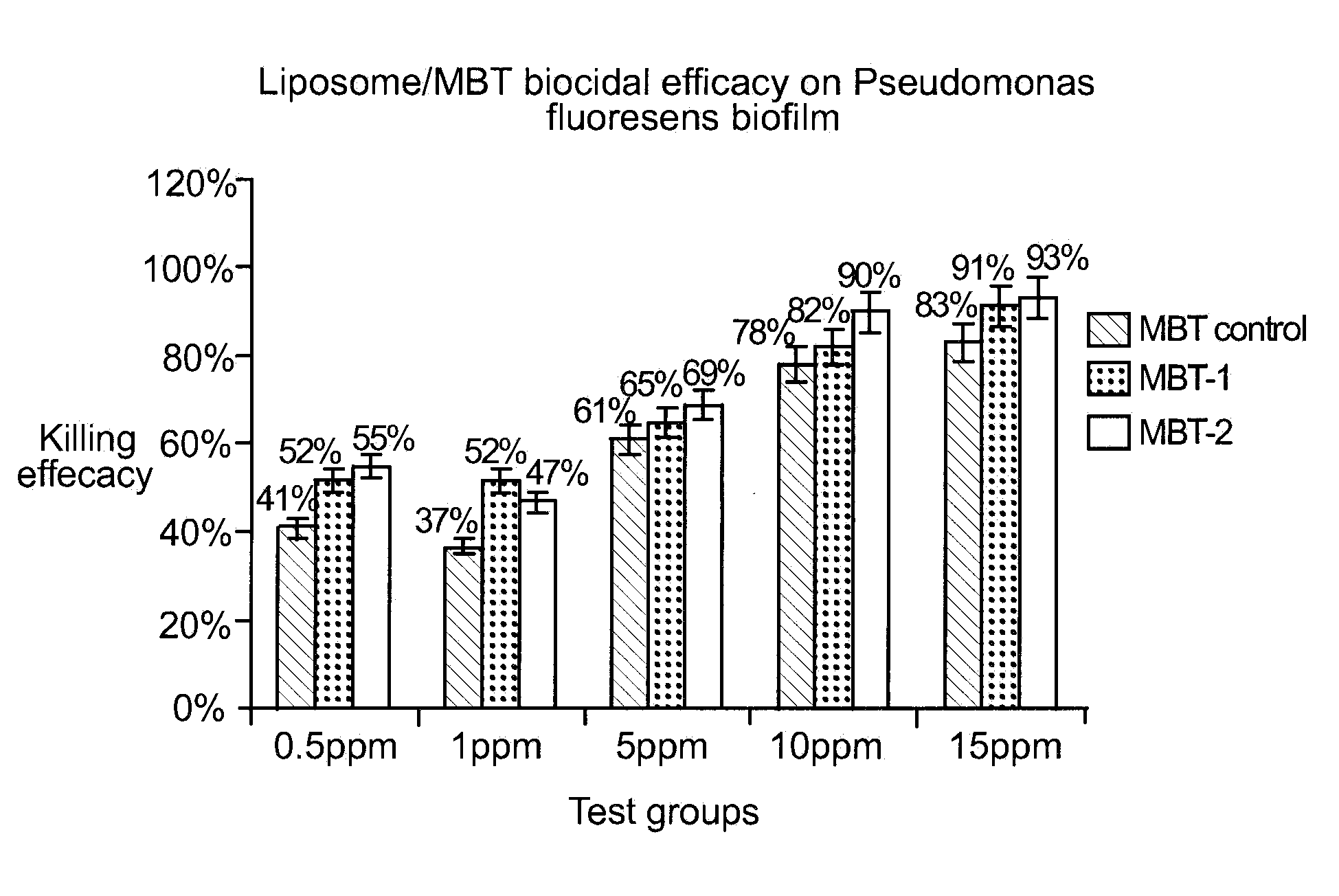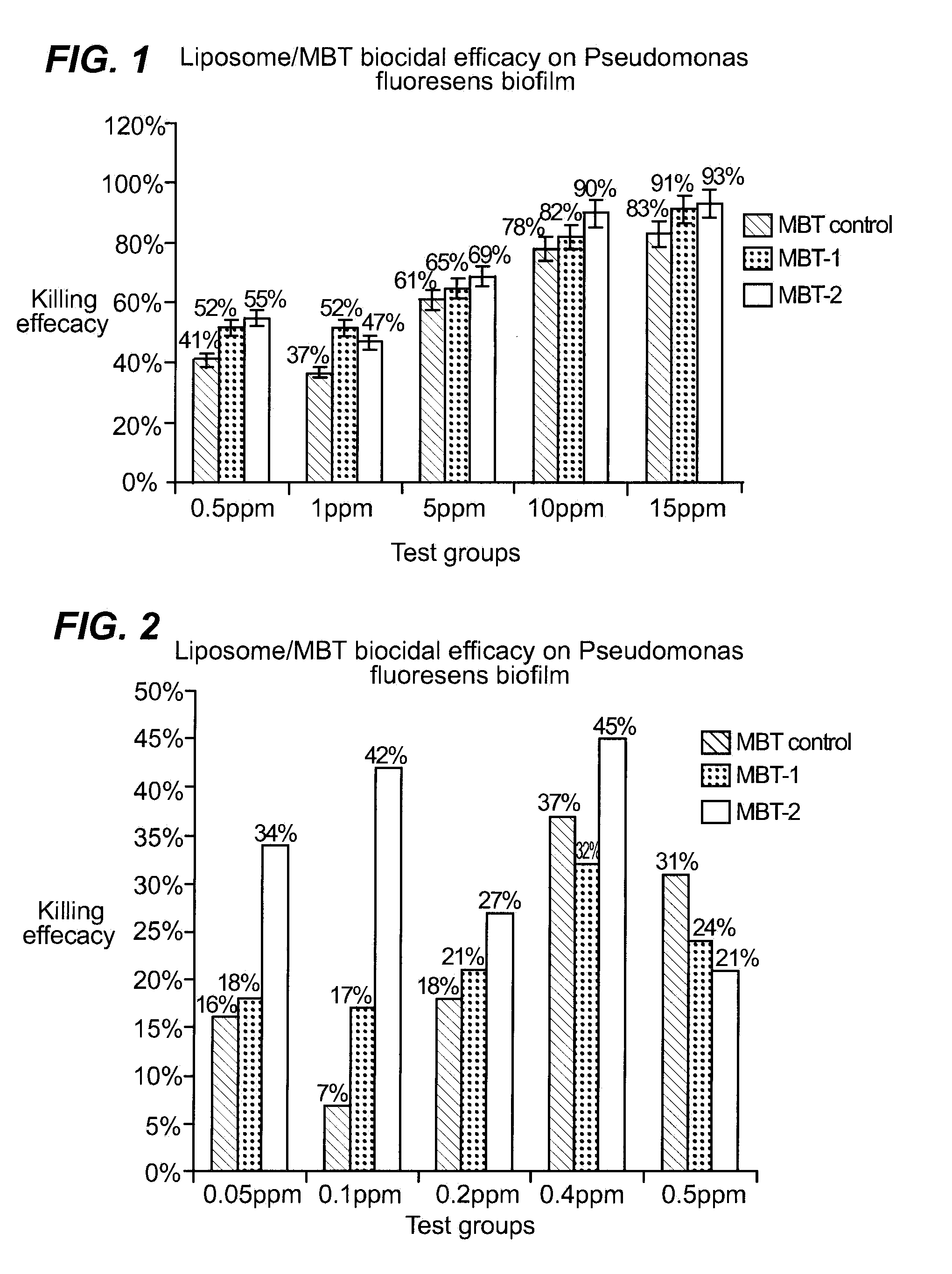Method for controlling microbial biofilm in aqueous systems
a technology of microbial biofilm and aqueous system, which is applied in the direction of phosphorous compound active ingredients, nitro compound active ingredients, ketone active ingredients, etc., can solve the problems of increased maintenance, increased efficiency of industrial machinery, and potential health hazards, so as to increase the efficiency and effectiveness of introducing
- Summary
- Abstract
- Description
- Claims
- Application Information
AI Technical Summary
Benefits of technology
Problems solved by technology
Method used
Image
Examples
example
[0028]The invention is illustrated in the following non-limiting examples, which are provided for the purpose of representation, and are not to be construed as limiting the scope of the invention. All parts and percentages in the examples are by weight unless indicated otherwise.
[0029]Liposomes (150 nanometers average diameter) were created that incorporated the biocide methylene bis thiocyanate (MBT), a US EPA registered biocide active ingredient. The liposomes were then placed in microtiter plates that had microbial biofilms coating them. The microbe inhibiting efficacy of the MBT-liposomes was then compared with non-liposomal MBT when used at the same MBT concentrations. The liposomes containing MBT penetrated the biofilm and inhibited the biofilm organisms much more effectively than the non-liposomal MBT (control MBT) solution.
[0030]Two MBT containing liposomes were created designated MBT-1 (155 nm average diameter) and MBT-2 (137 nm average diameter) in the results.
[0031]The re...
PUM
| Property | Measurement | Unit |
|---|---|---|
| diameters | aaaaa | aaaaa |
| diameters | aaaaa | aaaaa |
| size | aaaaa | aaaaa |
Abstract
Description
Claims
Application Information
 Login to View More
Login to View More - R&D
- Intellectual Property
- Life Sciences
- Materials
- Tech Scout
- Unparalleled Data Quality
- Higher Quality Content
- 60% Fewer Hallucinations
Browse by: Latest US Patents, China's latest patents, Technical Efficacy Thesaurus, Application Domain, Technology Topic, Popular Technical Reports.
© 2025 PatSnap. All rights reserved.Legal|Privacy policy|Modern Slavery Act Transparency Statement|Sitemap|About US| Contact US: help@patsnap.com



